[Collaborations]
[SCOM]
[Performance and Recording]
[Education and Community Work]
Collaborations
[Collaborations]
[SCOM]
[Performance and Recording]
[Education and Community Work]
Margaret Morgan
Poet and Librettist
Margaret Morgan is a poet and librettist who has collaborated with Nigel Morgan over a period of nearly thirty years; from the Carol for the Birth of the Unconquered Sun in 1976 to The Text is a Star in 2005. Some of her most engaging texts are those written for children: the multi-lingual Celebration Conjugation, the story behind the Pokèmon phenomenon in The Pokèmon Songbook, and a number of colourful songs for BBCNOW’s education and community projects. Her most ambitious collection of poems for musical setting –Nine Figures on a Hill – was completed last year and provides the central material for Family of Man.
Poet and Anorak Margaret Morgan is both poet and anorak. Deeply influenced by Francis Ponge, a twentieth century French writer and disciple of Lucretius, who wrote the long Latin poem called ‘De Rerum Natura,’, she prefers to think and write about things. Records and diaries also enthral her, thus she is drawn to Gilbert White and Captain James Cook, who not only kept logs and notebooks but also lived during an era she finds inspiring and nostalgically enviable. It is possible that her choice of heroes, one who stayed put and another who circumnavigated the world, speak of uneasy opposites in her make up.
Staying put has fastened her interest on the River Ash in Hertfordshire, a small chalk stream or bourne,(now you see it now you don’t). Many of her ancestors were born beside this little river and she has walked about beside it in many weathers, catching its mood in photographs. In a small churchyard close by the banks is the grave of Captain William Harvey who sailed with Cook on all three of his famous voyages.
The possibility of travel, or, in his case, exile, has led her to read the books in English translation of the late W. G. Sebald, in whose style prose and poetry entwine and enrich each other. ‘After Nature’ currently fascinates her with its huge overwhelming theme so delicately but unmistakably present all the time.
However, she is not always reading, and is most likely to be found in the garden.
Sun, Shade and Rain
During the summer of 2003 Margaret Morgan wrote a long sequence of poems as backdrops for an extended cycle of music for string quartet. Le Jardin Sec is the first of these pieces to be completed and is now available as a study score.
As an introduction to her work part of this sequence is presented here with photographs by the author.
[Collaborations]
[SCOM]
[Performance and Recording]
[Education and Community Work]
Le jardin sec
Bees scorch
Round the red bosses
Of rosa Moyseii,
Buzz like train sets.
Apples thunder
Like gorilla gangs
Crushing their way
To the jungle floor.
Butterfly pumps
Her faded wings,
No more stained glass
But worn tapestries.
White currants in cells
In pitiless sun
Sweat oval beads.
Poppies roll drums.
Cross brown grass
Under cube-cut trees,
An avenue of golden
Propped boxes,
And the vista races
Towards us, an actor
Late for his cue,
Cloaked in flames.
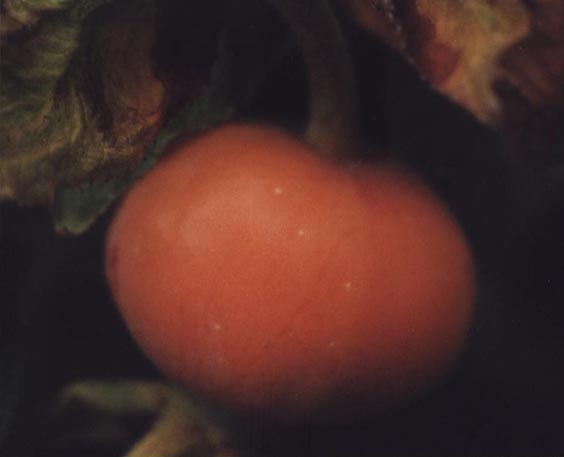
© Margaret Morgan 2003
[Collaborations]
[SCOM]
[Performance and Recording]
[Education and Community Work]
Horses of Helios invade
Eoos was first;
trickled in, unlocked
the garden gate,
then Ethiops
sparkled and kicked
at the sleek hebe
and Erythreos
painted everything
red he could reach.
Pyrios lit up
the perlagoniums
and grazed by the fire.
while Philogea
penetrated the deep
cool earth he loved.
Bronte smouldered,
thundering smokily
under his breath.
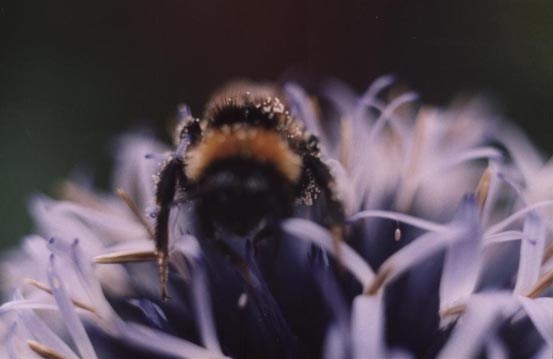
© Margaret Morgan
[Collaborations]
[SCOM]
[Performance and Recording]
[Education and Community Work]
The Hoverfly On My Pen.
‘I’m a fly,’ you assure me, ‘a fly with attitude.’ But I think
you have gone too far down the road of clever disguises, too much
the target of the rolled newspaper as your hover between the wasp,
the housefly and the bumblebee. You sit like a bead ornament on
my biro, black bead, white bead, black, white, black, a black
triangle. Then a small pointed bead clips on to click the rest
in place.You quiver in your cradle of legs like a yacht in dry dock. You
dart off, a kite on a gust of wind tugging at a string, a balancing
dirigible keeping the willow’s twigs under surveillance, plotting
the dropping of bombs that destroy leaves long after your visit.
When you’ve finished deep-throating the lilac, your barley-sugar
body wagging like a suckling lamb’s tail, I watch your shadow
through the leaves. Your solar-powered wings make two ‘v’s over
and over till they blur and you emerge, hover, surphic bouncer,
guarding your patch of sun five foot above a hot paving slab,
hovering up warmthYou’re a bad driver, havering about all over the road, sudden
stops, kangaroo petrol, swift collisions, cutting up bluebottles
on business trips, bouncing off barriers until, exhausted, you
pull over onto a leaf, fluff up your wings, rub the back of your
head and wring your handsI’ve waited ages to see you attack something, act like the tiger
you ape, but no. You part the sticky locks of flowers, your mouth
a riffle trapping particles of gold. You grew out of aphids when
your wings bore you to higher spying, just topped up at pollen
stations until you found yourself sucked dry by a spider. You
have proved an ideal subject, demonstrating that the time to stop
writing is when the subject matter runs out. When I went to view
your body, thinking I might subject it to a microscope, a bird
had carried it off, leaving only its white deposit with black
suspension marks…
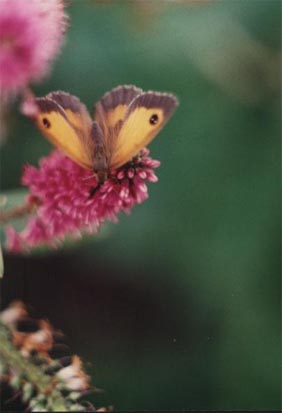
© Margaret Morgan
[Collaborations]
[SCOM]
[Performance and Recording]
[Education and Community Work]
La joie soudaine
Suddenly the garden is playing in the shower
And dancing to the music of the rain,
Flashing its streaming flanks, cupping its palms,
Dripping on the humble plants below, Who rub green fingers in
their eyes, or keep themScrewed tight shut, while the teasel
Is proud of the reservoir in its side pockets
As the downward slither trickles and drips Till water is raised
again in microscopic beadsNot visible from the gazebo where we sing
With the burgeoning river as it finds a voice
And calls us from the blue borders of the plain
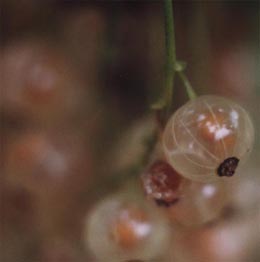
© Margaret Morgan
Water Garden, a paradelle
Our love cried on the hills like neglected sheep.
Our love cried on the hills like neglected sheep.
You left it for death so I ran after living.
You left it for death so I ran after living.
After neglected love our living death ran on.
For you I left hills like sheep. It cried so…
You swam beside me in dreams, with a black sack,
You swam beside me in dreams with a black sack,
To catch and use the breathing of my heart,
To catch and use the breathing of my heart.
A black of dreams swam with you beside my heart
To catch and, in the breathing, sack and use me…
Where your reflection had slipped off the carp’s back,
Where your reflection had slipped off the carp’s back,
My face still floated among the lily pads,
My face still floated among the lily pads.
My face carps back, floats among your slipped-
Off lily pads where the reflection still had the… the
After you ran to catch my heart, fallen,
You left it. Our love like lily sheep
Pads off in dreams of death. Your still, black
Breathing floated neglected, cried on hills.
My reflection, a face, beside me. I swam among the carps
Where the sack had slipped. So, for the use…
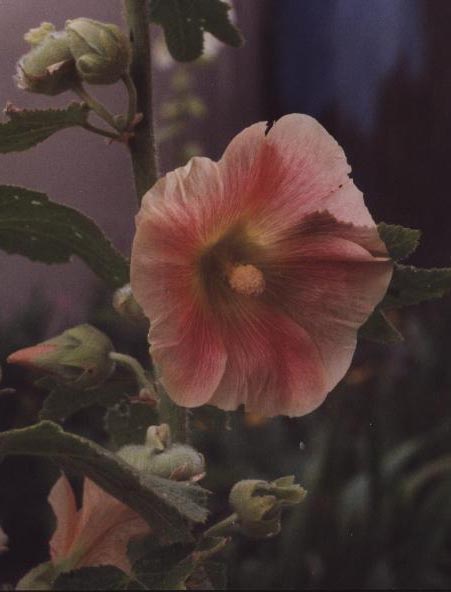
© Margaret Morgan
[Collaborations]
[SCOM]
[Performance and Recording]
[Education and Community Work]
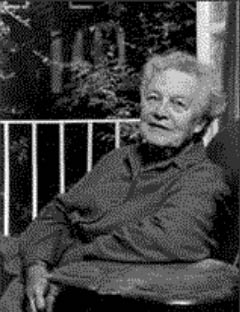
Kathleen Raine
Nigel
Morgan writes . . .
I discovered Kathleen Raine’s poetry thanks to Ian Skelly’s Radio 3 Sunday Feature A Note Struck by the Stars broadcast in 2001. It was a revelation. How had I missed such poetry? I immediately set out to read what I could and soon discovered so much was out of print. A Christmas present of her Autobiographies began unwrapping what so often has felt like the voice of a kindred spirit. In those pages I discovered her connection with Barbara Hepworth. In some sense Stone and Flower chose itself as a focus for musical attention.
I had no intention of setting Raine’s words; they seemed too complete, without the interpretative space or ambiguity necessary for translation to music. I did, however, decide that one poem, Angelus, might be taken as a formal backdrop to an instrumental composition. Basing music on something external and so defined as a poem is not my way. In this instance using such a formal poem as a direct stimulus proved a rich experience, and the outcome has been Angelus for violin and ripieno violins, a kind of companion piece for The Lark Ascending by Vaughan-Williams.
[Collaborations]
[SCOM]
[Performance and Recording]
[Education and Community Work]
Angelus
I see the blue, the green the golden and the red.
I have forgotten all the angel said.
The flower, the leaf, the meadow and the tree,
but of the words I have no memory.
I hear the swift, the martin and the wren,
but what was told me, past all thought is gone.
The doves, the rainbow, echo, and the wind,
but of the meaning, all is out of mind.
Only I know he spoke the word that sings its way
in my blood streaming, over rocks to sea,
A word engraved in the bone, that burns within
to apotheosis the substance off a dream,
That living I shall never hear again,
because I pass, I pass, while dreams remain.
[Collaborations]
[SCOM]
[Performance and Recording]
[Education and Community Work]
From the programme information for BBC Radio 3 Sunday Feature
Sunday 18th November 2001 Written and Presented by
Ian SkellyA Note Struck By The StarsKathleen Raine at 93 is widely regarded as Britain’s greatest
living poet. She has been admired by many of the great literary names
of the 20th Century, W.B. Yeats among them and her friend T.S. Eliot.
Her scholarship on Blake remains unrivalled and world renowned.For the past decade she has worked with her
Temenos
Academy to revive knowledge of traditional principles that have
always anchored civilisations; knowledge now lost in our rush for
scientific progress and materialism, which she feels has plunged
the world into a terrifying state of environmental and spiritual
crisis. She has inspired many to bring about a change of heart in
society, none more so than The Prince of Wales. Ian Skelly talks
with this formidable artist about her work and life, including her
tempestuous relationship with Gavin Maxwell, author of “A Ring
of Bright Water,” and hears from the many eminent writers and
artists who have been drawn to the light of her poetry.
[Collaborations]
[SCOM]
[Performance
and Recording]
[Education and Community Work]
Sean Cubitt
Nigel Morgan writes . . .
Finding words to expand R.Murray-Shafer’s writing about the phenomenon of schizophonia was a challenging task. I consulted several writers and poets before discovering the solution on my own bookshelves.
Sean Cubitt’s Digital Aesthetics is a truly extraordinary book. It was the first full-length study to investigate the aesthetic nature and purposes of computer culture in the contemporary world. The book is, despite its title, pure poetry. Creating a text for the two major sections of Schizophonia did not seem a difficult task: the outcome was received most enthusiastically by the author!
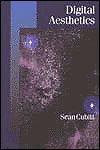
Formerly Reader in Media and Video Studies at Liverpool John Moores University, Sean Cubitt is now a professor at Waikato University in New Zealand.
His book Digital Aesthetics is published by Sage
There is a website associated with this book providing illustrations, outtakes, a discussion area and links to other sites of related interest.
[Collaborations]
[SCOM]
[Performance and Recording]
[Education and Community Work]
Robert Court
Nigel Morgan writes . . .
I am sure it is every composer’s hope that one day he or she will discover a musician able to realise his or her intentions in performance. Robert Court has been music director and lead performer for three of my most ambitious and demanding public projects: Conversations in Colour, Schizophonia and The Rhythm of the Stones. He has quite simply been the most patient and critical friend any composer can wish for, and his work and that of his chamber choir Cantemus Wales, has been an inspiration and a guide.
[Collaborations]
[SCOM]
[Performance and Recording]
[Education and Community Work]
Robert Court pursues a busy career as keyboard player and choral director. He plays frequently with the BBC National Orchestra of Wales and has played with the Halle, Philharmonia, Royal Liverpool Philharmonic, BBC Philhannonic, Welsh National Opera, English Symphony and Northern Sinfonia orchestras.
Performing engagements take him all over Britain and he has played in France, Austria, the Czech Republic and Norway. In 1999 he played for the first time in New York and in April 2000 spent a week as artist in residence at Kansas State University. In January this year he took part in the Norwegian IIios 2002 Festival performing in innovative musical communication project linking North and South Norway in a simultaneous performance. He has recorded CDs with various orchestras and choirs and was the organist for the young treble Aled Jones on the best selling BBC recording “Voices from the Holy Land”. In 1988 Robert co-founded, with Philip Thomas, Cardiff Organ Events – an organization dedicated to promoting the organ through recitals by celebrity recitalists and other related activities. Cardiff Organ Events is responsible for organizing most of the organ recitals, which take place in the area including those at St David’s Hall, Cardiff and the National Museum of Wales. Robert teaches organ, keyboard skills and harmony & counterpoint at Cardiff University. He works as an examiner for Trinity College, London and Edexcel. He founded and directs the St Augustine’s Singers and Chamber Orchestra and is the director of the choral group “Cantemus”. He is also accompanist and assistant director of the Cardiff County & Vale of Glamorgan Youth Choir.
[Collaborations]
[SCOM]
[Performance and Recording]
[Education and Community Work]
John Cook
Nigel Morgan writes . . .
Dr John Cook is Principal Research Fellow at the Learning Technology Research Institute at London Metropolitan University. We met at a workshop on Music and AI at Edinburgh University in the early nineties. He was just beginning his doctoral research into music and information theory. I was just beginning to investigate the educational potential of my work with Symbolic Composer. We discovered we shared many of the same objectives. During the next ten years we collaborated on a number of papers and research projects. A description of our work has recently been gathered together in a single paper to be published in the long-awaited final edition of the CTICM publication Musicus. This paper can be read on line or downloaded as a .PDF by clicking here.
[Collaborations]
[SCOM]
[Performance and Recording]
[Education and Community Work]
John Cook and Nigel Morgan are currently working on a book titled:
Composing: How and Why
Technology offers the promise of reinstating composing once more at the heart of musicianship. Just as visual arts practice and creative writing have been demystified by photography, the word processor and the internet, the complex skills and techniques surrounding music making are being redefined and made newly accessible by digital recording, interactive machine musicianship and synthesis. In the light of these new conditions revisiting and reinventing traditional forms of learning and thinking about music can offer us a lively way forward to developing the creative and critical tools to make and understand new music. The authors believe that interactive portals able to foster creative and critical thinking will soon be a part of new technologies that are responsive to a individual’ learning needs: to encourage self-explanation, speculation, and reflection about intention. We can even look forward to the machine becoming a kind of knowledge-mentor prompting us to explain our intentions, formulate our plans, recognise areas of weakness and review outcomes as part of the creative process.
Composing: How and Why examines the relationship of thinking to composing and how dialogue and self-explanation can mediate between listening and making one’s own music. It examines how musical learning has traditionally employed modes of thinking and questioning and how these today might be remodelled and embedded within the technologies and media through which we will increasingly learn and gather information.
